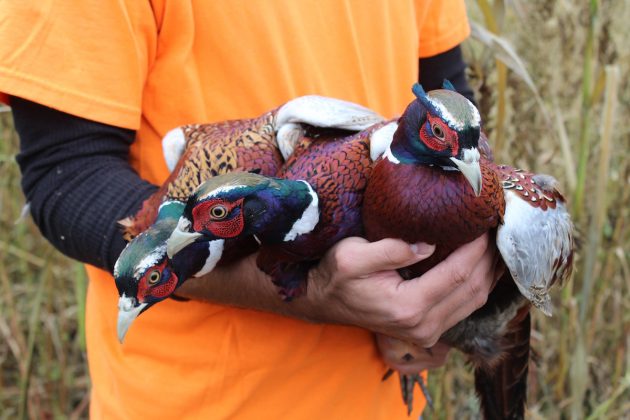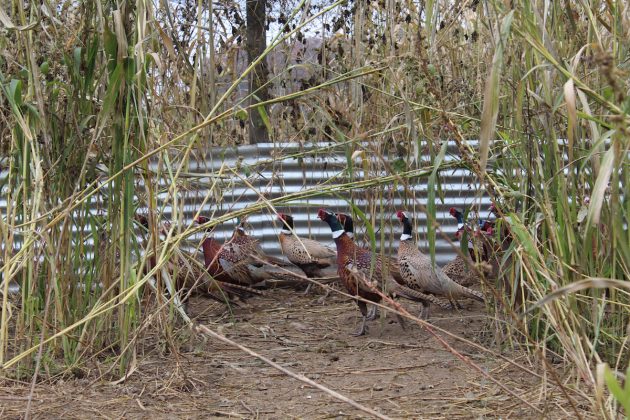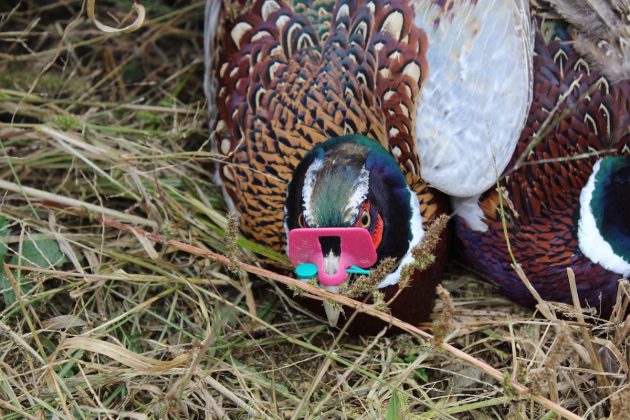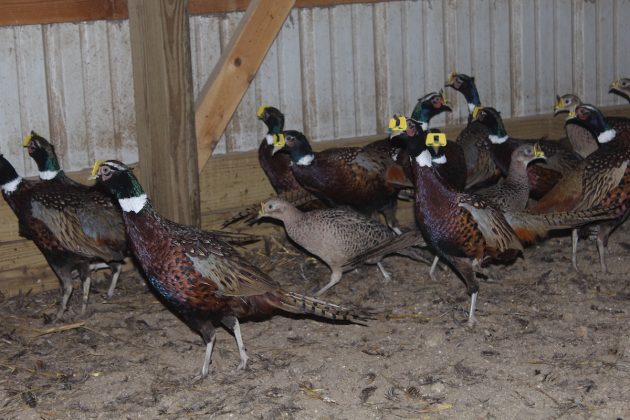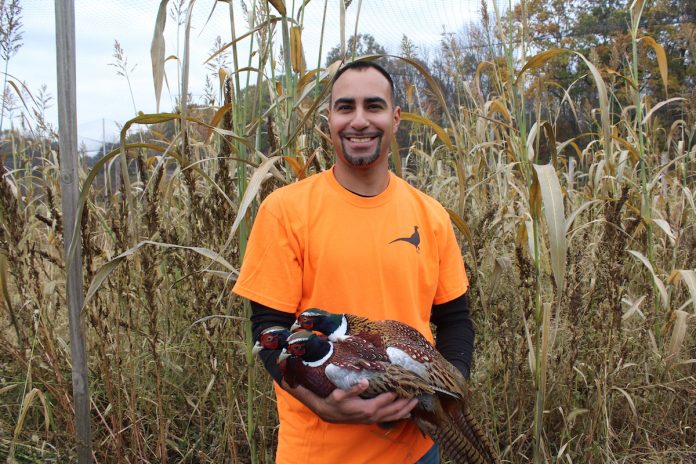
SMITH TOWNSHIP, Ohio — Nick Zabala has always been interested in ring-necked pheasants. It started when he was little and would watch his dad go out pheasant hunting in the fall.
“I always wanted to be like my dad. He was my hero,” Zabala said.
Once he was old enough to go hunting, Zabala went out with his dad. But they saw hardly any birds.
The ring-necked pheasant population in Ohio is on a steady decline due to habitat loss, according to the Ohio Department of Natural Resources Division of Wildlife.
Zabala wanted to see pheasants. He wasn’t seeing them in the wild. So, he decided to raise them. He started at his house in Cleveland.
What started as a lark almost a decade ago quickly grew into a business, Sunrise Harvest Pheasant Farm, when he saw the demand for birds.
City chickens
Zabala bought five juvenile pheasants in 2010 while living in the Old Brooklyn neighborhood of Cleveland. He wanted to breed them and hatch his own chicks, but he had trouble with incubating.
The next year he bought chicks to see what it was like raising them from the start. He started with about 25 in the spring but bought more later on for a total of about 75 birds.
That’s when he realized he’d bitten off a bit more than he could chew, Zabala said. He was raising the birds in an attached sunroom on his house.
“The birds started growing a lot faster than I could imagine,” he said.
As they matured, the pheasants became quite noisy and attracted attention from the neighbors in his suburban neighborhood.
Zabala listed the birds on Craigslist and sold them pretty quickly. His girlfriend at the time saw the demand and told Zabala he might be onto something.
He had already been thinking about moving to the country. The pheasants sealed the deal.
Zabala found a place just north of Alliance, quit his full-time job and moved in the spring of 2012.
“Everyone thought I was crazy,” he said. “They thought I was even crazier when I moved out here. ‘You’re leaving your job to raise birds?’ Something was calling me to do this.”
Always learning
After he moved, he ramped things up. Zabala converted the garage at his new house to a pheasant facility. He built pens in the backyard. That year, he had 620 birds, he said.
He still didn’t know a lot about raising pheasants, or any birds for that matter, but he continued to learn from his mistakes. Zabala likes a challenge and was undeterred by the setbacks.
By 2013, he’d figured out how to incubate eggs (buy a better incubator) and began hatching his own chicks. He built a pole barn in 2015 to make room for his growing operation.
He’s learned about how to deal with power outages in the spring when he’s trying to keep chicks warm (buy a generator) and how to keep older birds from breaking light bulbs in their indoor pens (put a screen over a recessed light).
Pheasant will fight and can become cannibalistic when being raised in captivity. Zabala found blinders that prevent the birds from looking straight forward and zeroing in on attacking other birds.
Living in the country taught him a lot about predators Owls ripped birds through the netting in his outdoor flight pens (use smaller netting).
“I never knew what a mink was until one mink killed my whole flock,” he said. “Every year, it was something.”
Reason to smile
To share his knowledge with others, Zabala created guides on raising pheasants, available on his website, to answer common questions from his customers. He recently started making instructional YouTube videos for those that are more visual learners.
“I had no guide,” he said. “I’m just trying to help other bypass the struggles I had.”
The goal is to sell pheasants before they are fully mature at 20 weeks. Zabala keeps between 70 to 80 breeders through the winter. That’s the slow season. Zabala still works another job part-time around his farm.
Things pick back up in March when the hens start laying. This year his hens laid about 5,000 eggs. Zabala collects eggs two to three times a day.
He sets eggs in the incubator in April. Pheasant eggs hatch after 24 days of incubation. He sets eggs each week on Mondays, and they hatch on Thursdays. Each hatching group is between 120-200 birds.
“I have the incubators in my office,” he said. “And I’ll start to hear it, hear a chirp. Especially the first hatch of the season, I get a smile from ear to ear.”
He does 20 hatches each year. This year he hatched about 3,000 birds.
Chicks live for about six weeks in brooder boxes under heat lamps before moving on to bigger enclosures. The pheasants stay together in age-group flocks to prevent fighting.
He sells birds at all ages, from eggs and day-old chicks to juvenile and adult birds. Some use them to train hunting dogs. Small game season opened Nov. 1 in Ohio. The Ohio Division of Wildlife stocks 24 public hunting areas with more than 14,000 pheasants throughout the fall.
Others eat pheasant for Thanksgiving instead of turkey.
Some people, like Zabala, want to raise them because they never got to see them in the wild. They raise pheasants like other people raise chickens.
“Seeing the passion other people have for these birds, that’s what keeps me going,” he said.
(Reporter Rachel Wagoner can be contacted at 800-837-3419 or rachel@farmanddairy.com.)






